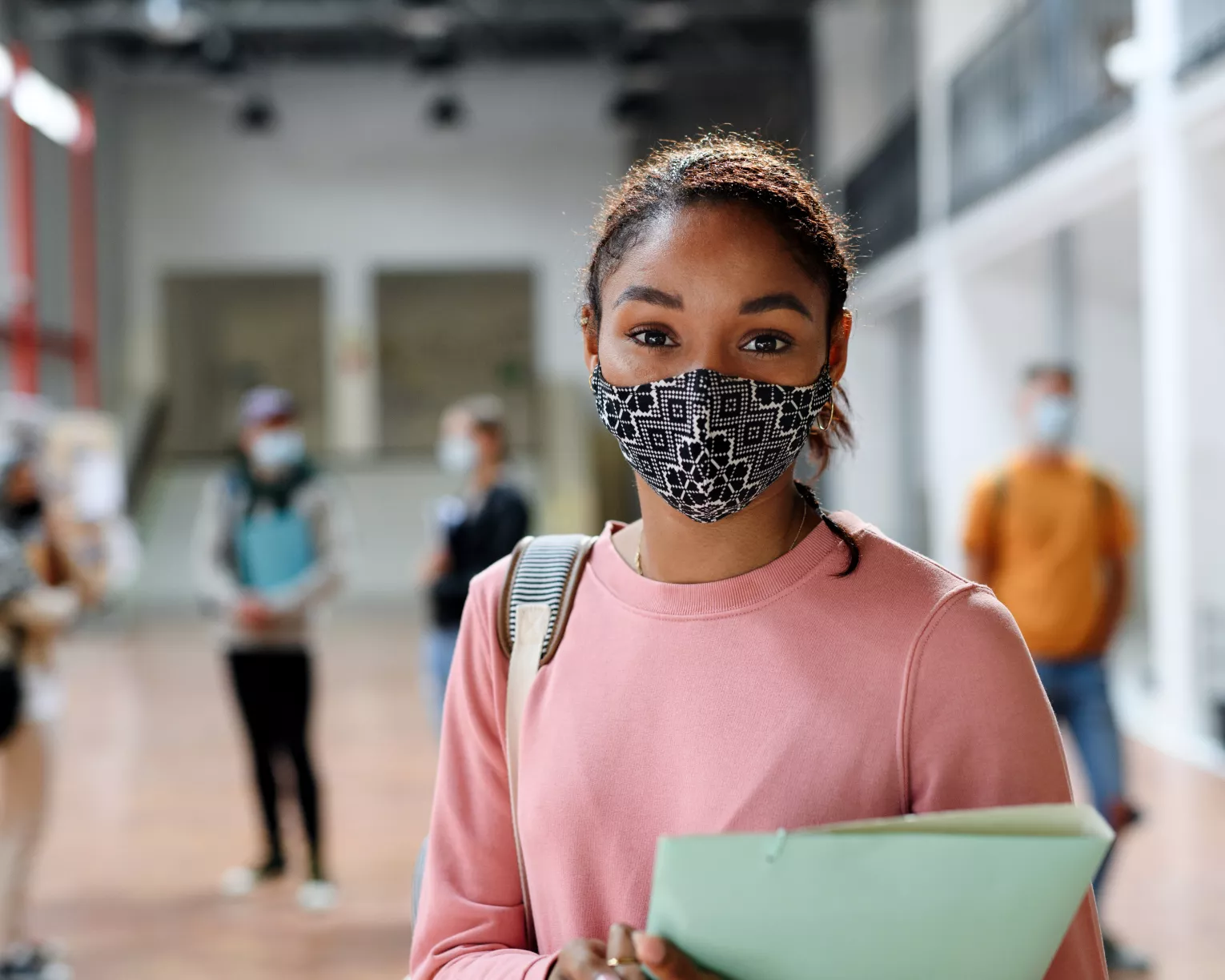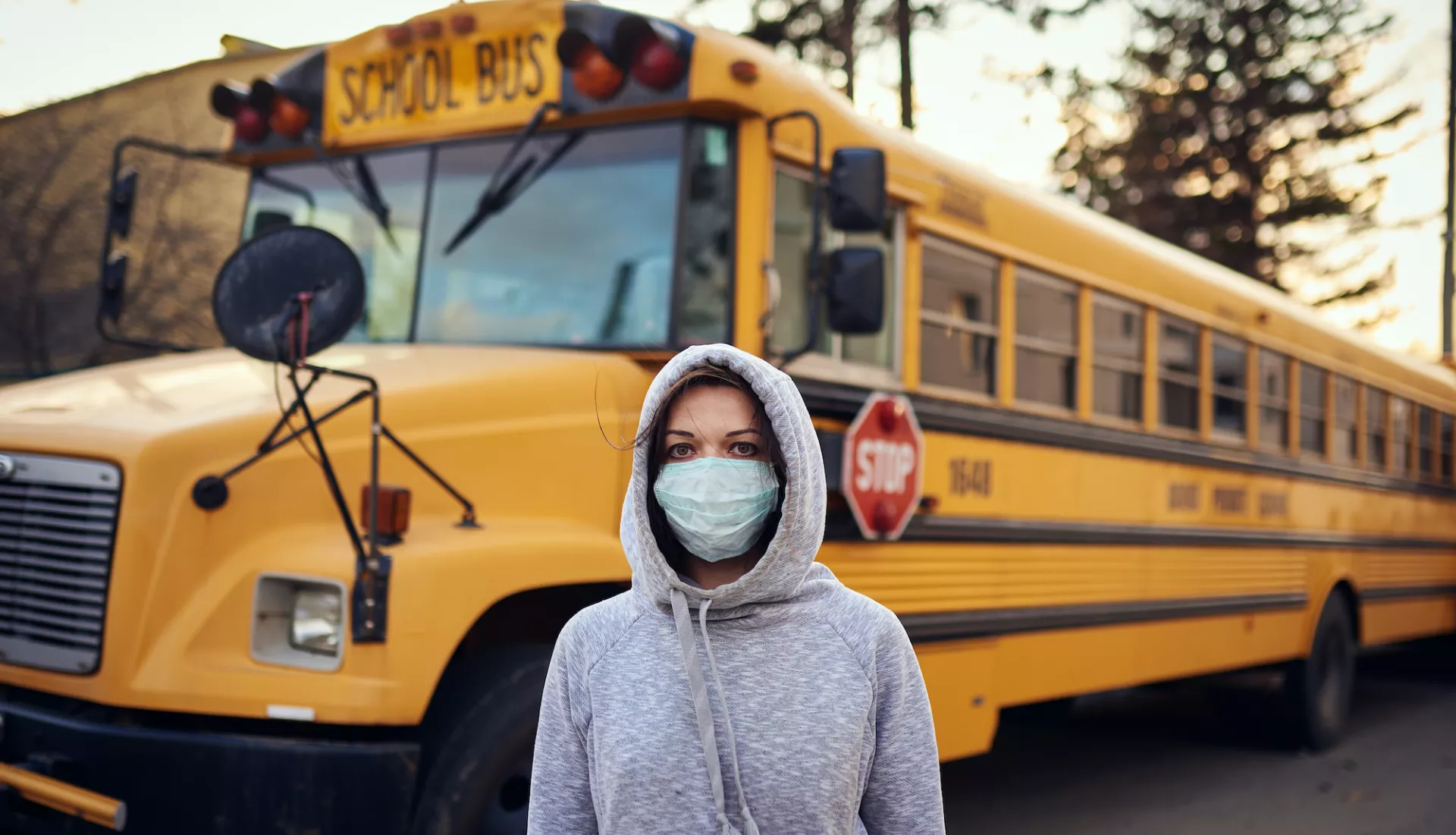Key Takeaways
- The National Education Association recently surveyed K-12 and higher education members to learn about their vaccination rate and access to the COVID-19 vaccine
- The poll found that the number of educators back to work in physical buildings far outpaces the number of educators being vaccinated.
- NEA President Becky Pringle said it's far past time for every governor to prioritize educator vaccinations - and to fund proven mitigation strategies that can make the return to school much safer.
Last December, when the Food and Drug Administration approved two COVID-19 vaccines, the National Education Association (NEA) immediately urged state and local authorities to prioritize the 5 million educators who work in the nation's public schools. Progress on that front has been frustratingly slow. Too many states - still only half the country - haven't begun vaccinating educators.
According to a NEA new survey released Tuesday, only one in five of its members (18 percent) have been vaccinated so far, and an additional 17 percent have actually scheduled an appointment to receive one. White educators are twice as likely (20 percent) as Black members (9 percent) to have been vaccinated.
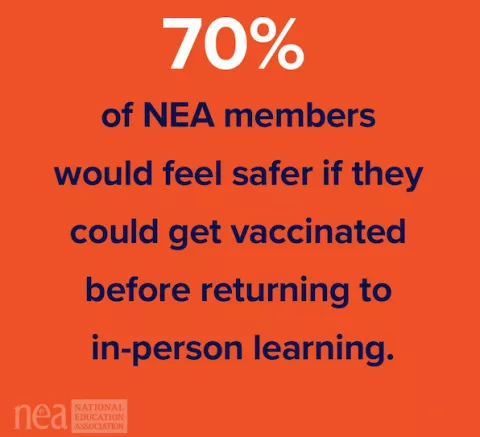
The survey also found 85 percent believe educators should be prioritized and 70 percent said they would feel safer about working in-person as a result of the vaccines.
The poll of 3,305 NEA K-12 members and 177 higher education members was conducted from January 27th to February 3rd.
Even with so few educators vaccinated, the demands for a return to full-time, in-person learning are growing louder. Many lawmakers seem eager to sow political divisions, reverting to the tried-and-true tactic of scapegoating unions as obstacles to progress. Many of these politicians are the same ones who have downplayed the severity of the pandemic crisis or repeatedly blocked the necessary funding to reopen schools safely (or both).
Educators want nothing more than to be back to in-person learning, says NEA President Becky Pringle, but only when it is safe. Safety depends on more than a vaccine that, experts agree, is by itself not a panacea.
“It’s time to fund proven mitigation strategies - and it’s far past time for every governor to prioritize educator vaccinations,” Pringle said.
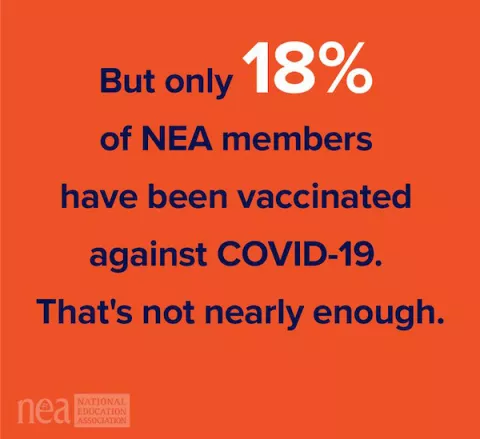
NEA has been a vocal and consistent advocate of giving every district the resources and expertise it needs to reopen schools safely. Educators, their student and families are still waiting for lawmakers to take action.
“Since the beginning of the pandemic, we have been advocating for the resources to implement CDC-recommended standards and ensure educators are back in person with their students as safely and quickly as possible,” Pringle explained. “But those CDC standards still aren’t being met. Most schools, especially those attended by Black, brown, indigenous, and poor white students have severely outdated ventilation systems and no testing or tracing programs to speak of.”
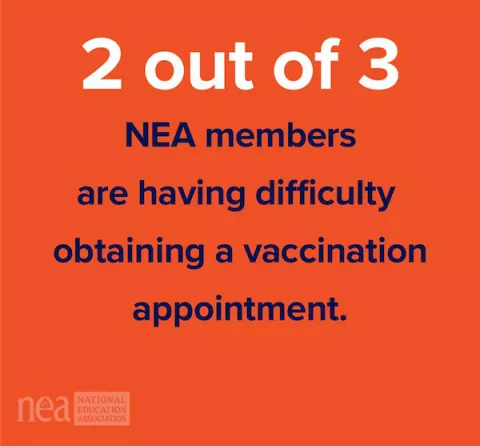
A hasty and ill-conceived push to open school doors can literally cost lives. Montgomery Public Schools, one of largest school systems in Alabama, reversed course earlier this month, returning thousands of students to virtual learning after several recent staff deaths were linked to COVID-19. The Alabama Education Association believes 39 teachers, support staff, coaches and administrators have died from the virus as of Jan. 25.
According to the NEA survey, 64% are currently working in school buildings all or part of the time.
In the survey, respondents were asked to rank a wide range of proposals to make school buildings safer. Requiring those who test positive to isolate according to CDC guidelines, thorough cleaning and disinfection of surfaces and requiring masks and other PPE were widely thought to be “very important” or “important.”

Safety and mitigation to control the virus is a pillar of the American Rescue Plan, the Biden administration’s $1.9 trillion emergency relief package. Biden has pledged $130 billion to support a reopening plan for K-12 schools - funds that can be used to reduce class sizes and modify spaces to comply with social distancing, modernize HVAC systems, hire more school custodians and nurses and counselors and facilitate social distancing on school transportation services.
NEA has called on Congress to quickly approve the bill, which has overwhelming support from the American public.
“Educators have been adapting, innovating, and showing up for our students every single day — our work has never stopped,” said Pringle. “Students know this, their families know this too. So, it’s time we all stand together and demand action from those who seek to divide us and look to shift blame educators in an effort to distract from their failure to provide the resources needed to keep students and educators safe."
